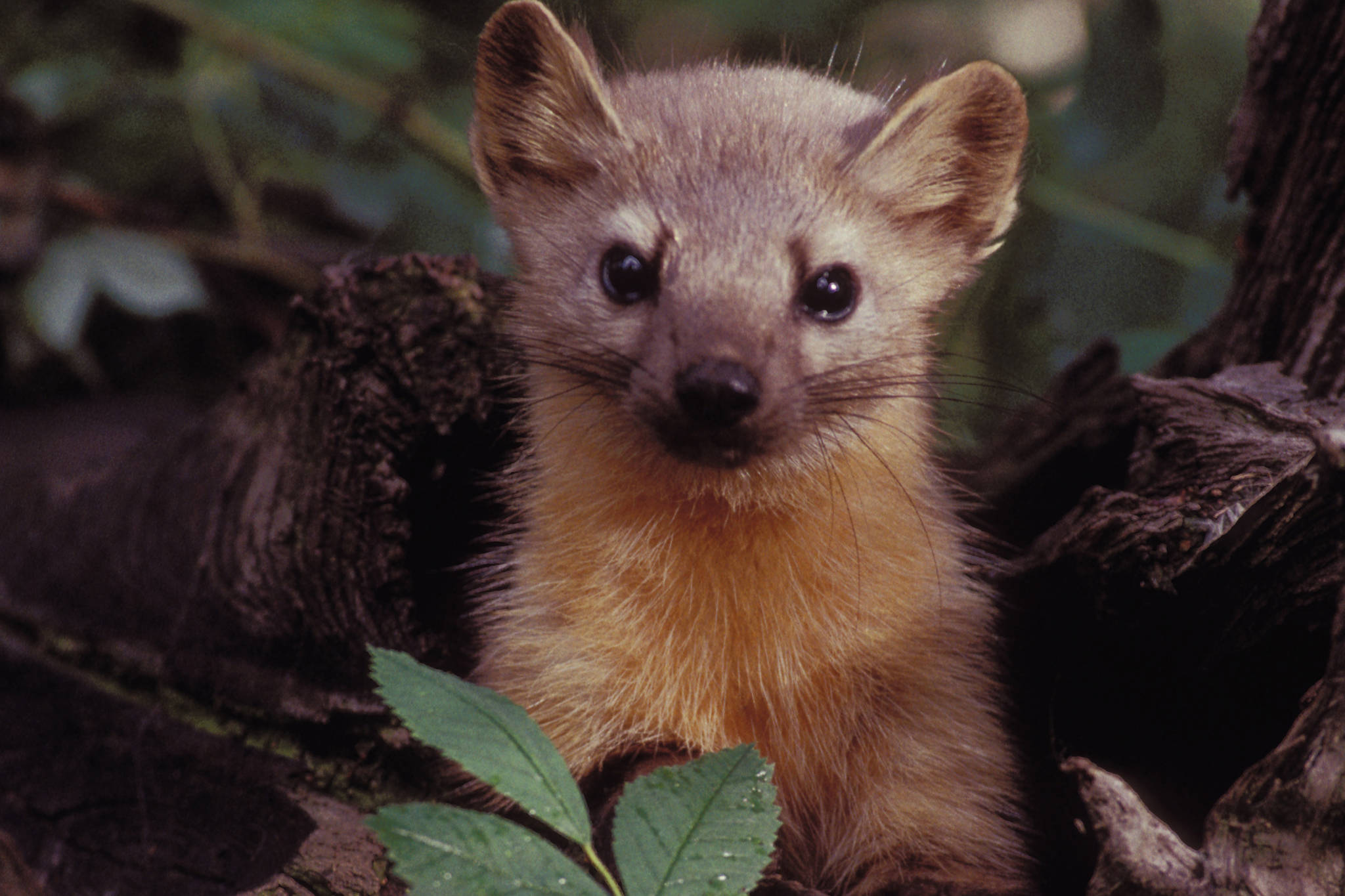The weasel family is well-represented in Alaska; of the nine species here, three are associated with water and the others are chiefly terrestrial. Of the terrestrial species, marten and fisher are particularly associated with forested habitats.
Marten range over most of Alaska. There are two species of marten here: The American marten lives in the boreal forests across North America including most of Alaska; the Pacific marten lives on Admiralty and Kuiu islands (and maybe some other islands in Southeast). Marten are highly arboreal, spending lots of time in trees but catching much of their prey on the ground. Voles are a favorite prey in most places, but marten can capture prey the size of a marmot or a grouse. Versatile feeders, they also eat carrion and fruit. They have a slender build and an orange-ish patch of fur on the chest.
Fishers live across North American boreal forests but reach their western limit — for some reason — in the southern Yukon and adjacent mainland Southeast Alaska. This species probably originated in eastern North America and spread westward since the last glaciation, but there is said to be an ice-age fossil in Central Alaska They occur at low densities here and in the Yukon, although there is some evidence that they may be increasing.
Fishers are not only rare here but tend to be elusive as well, so sightings of them in the wild are few — and thus they get much less attention than other species. However, in the limited space of this essay, I choose to write more about fishers.
Fishers tend to be larger and burlier than marten, although small female fishers and large male marten may overlap in size. Male fishers commonly weigh 3.5 -5.5 kg — 7.7-12.1 pounds. Although, some get much bigger. Females weigh about 2.0-2.6 kg — 4.4-5.7 pounds.
The fur is usually dark brown, darker than marten, but it sometimes has pale patches. Like all the terrestrial weasels, fishers can climb well, even coming down a tree head-first, like a squirrel. That’s possible because they, like squirrels, can rotate their feet so the curved claws, when extended, hook into the tree trunk.
Both marten and fishers have short legs, so traveling in soft snow can be difficult. Fishers tend to travel less then, or often use existing trails — their own or those of hares. The foot-loading (i.e., body weight per area of foot) of fishers is greater than that of marten, and male fishers have higher foot-loading than females, so they may have a harder time in soft snow. Fishers, perhaps especially males, often leave body-drag marks in soft snow.
Kits are born in spring, often in a tree cavity. Litter size varies with the food supply: usually two or three kits but sometimes more or none at all. Females mate soon after birthing, although the embryo does not implant in the uterus wall until 10 or 11 months later — late in the following winter. Gestation takes five or six weeks and the young kits are nursed by the mother for about 10 weeks.
[The difference between hares and rabbits]
All mammalian females spend a lot of energy on lactation; for female fishers, the cost of lactation plus the cost of extra hunting activity to fuel that milk production means that the total cost of reproduction is almost three times the energy needed during non-reproductive times. The kits are competent hunters at the age of four of five months, but most females don’t breed until they are two or three years old.
The home range size of fishers varies enormously, from just a few square kilometers to well over a hundred, apparently depending on prey availability. Males range more widely than females. Hares and small rodents are common prey in most places, but fishers also scavenge carcasses opportunistically and eat fruit and invertebrates at times. They can capture prey as big as a chicken or a porcupine; they subdue porcupines by attacking the vulnerable, quill-less nose until the victim is worn out.
The English common name “fisher” is a misnomer. Fishers may scavenge a few dead fish, but fish are not a common item on the menu. The name might come from a French word for the European polecat.
• Mary F. Willson is a retired professor of ecology. “On The Trails” is a weekly column that appears every Wednesday.

